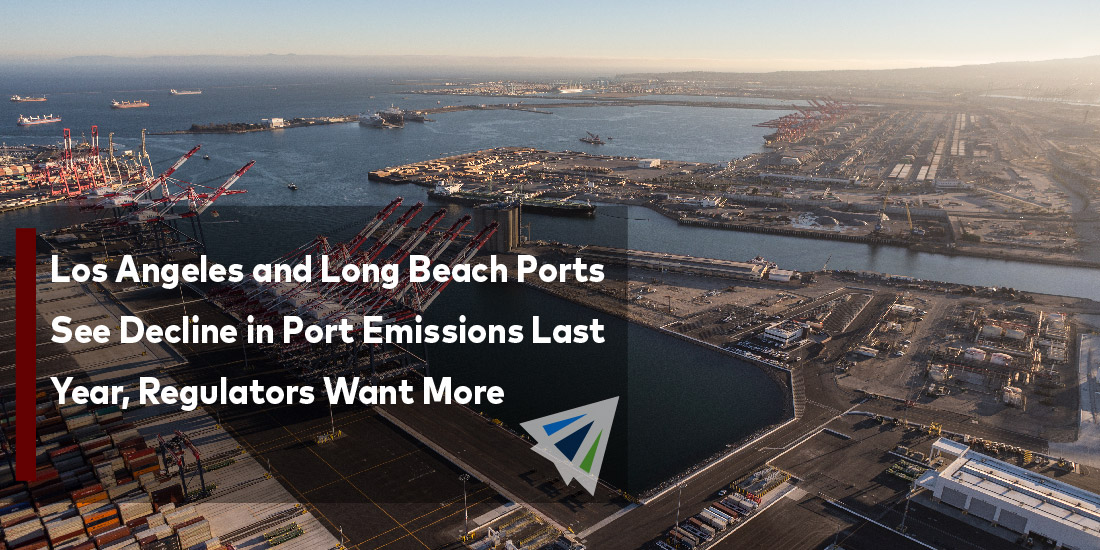A catastrophic air quality crisis that hit the ports of Los Angeles and Long Beach in 2021 brought the area’s long-standing pollution problem to light. The pandemic-driven increase in consumer spending, record-breaking cargo volumes, and the presence of over 100 ships anchored off the coast of Southern California were just a few of the elements that led to this worrying situation. Due to these circumstances, dangerous diesel pollution increased significantly, worsening an already serious issue.
In comparison to 2020, the levels of smog-forming nitrogen oxides, cancer-causing diesel particulate matter, and greenhouse gas emissions increased in the Port of Los Angeles by 54 percent, 39 percent, and 56 percent, respectively. Similar trends were observed in the Port of Long Beach, where emissions of nitrogen oxide rose 35 percent, emissions of greenhouse gases increased by 35 percent, and diesel particulate matter increased by 42 percent. In 2022, port emissions at Los Angeles and Long Beach saw a small decline, however, not enough to offset the negative effects of long-standing emissions in prior years and a continued increase in emissions for forecasted seasons.
These figures serve as a wake-up call for local, state, and federal officials who are jointly at fault for failing to safeguard the public’s health and deal with the expanding issue of pollution that causes smog and global warming. Unfortunately, there hasn’t always been enough done to address the air pollution and health crisis.
State of Los Angeles and Long Beach Port Emissions
The L.A. and Long Beach port complex continues to be Southern California’s biggest source of pollution. While the majority of the emissions from ships, vehicles, locomotives, and cargo-handling equipment are concentrated in nearby areas, the ports’ pollution has an impact on the air quality throughout Southern California, even reaching as far as the Inland Empire.
The main cause of the recent increase in pollution is oceangoing ships. Diesel particulate matter and greenhouse gas emissions at the Port of Los Angeles skyrocketed by a startling 147 percent and 136 percent, respectively, in 2021 over the previous year. Although less dramatic, the Port of Long Beach also experienced worrying growth, with diesel particulate matter rising by 71 percent and greenhouse gas emissions rising by 87 percent during the same time period.
Port officials minimized the pollution levels in 2021 and blamed them on an anomaly brought on by the pandemic. They attribute the reduction of emissions from anchored ships to efforts that reduce congestion, including a new ship queuing system. Even though there have been improvements since then, the pollution levels were already too high before the pandemic. Compared to pre-pandemic levels, cargo volume is still high, making a return to normal operations unacceptable.
Through the 2006 clean-air plan, efforts to enhance Southern California’s air quality have seen some improvement; nevertheless, further advancement depends on a quick shift to a zero-emission future. Since 2005, greenhouse gas emissions at the ports of Los Angeles and Long Beach have increased by 23 percent and 22 percent, respectively, in the wrong direction.
Efforts to Reduce Future Emissions
Mayors Eric Garcetti and Robert Garcia made a commitment to make the ports emission-free by 2030 for cargo handling equipment and by 2035 for trucks five years ago. However, due to opposition from local air quality inspectors, progress towards these objectives has been slow. Holding the ports responsible for their clean-air pledges requires immediate action.
By the end of 2023, the South Coast Air Quality Management District should establish long-delayed laws to compel pollution cleaning at the port complex in order to address this catastrophe. The state Air Resources Board should encourage more ships to use shore-side electricity while moored and move forward the deadline for zero-emission vehicles.
To help communities near ports, which frequently have high rates of asthma and cancer risk, reduce pollution, federal officials should limit emissions from ships and trains and allocate cash from infrastructure projects. To draw cleaner ships, hasten the adoption of zero-emission equipment and cars, and provide infrastructure for charging and fueling, stronger incentives should be implemented. To address emissions from numerous sources that contribute to smog and climate change, the current $20 per shipping container fee should be improved and increased.
Former Governor Arnold Schwarzenegger vetoed a planned $60 per container fee in 2008. A key source of money to combat the rising port pollution crisis might be found by revisiting this notion in 2023.
Furthermore, those in charge of the ports must show stronger environmental leadership. Los Angeles and Long Beach’s impending mayoral elections provide an opportunity for new leaders to act quickly and forcefully to decrease emissions and put the public’s health ahead of corporate profits. Nothing less than the best is due to the local communities near these ports.
Should you have any questions regarding this and how it could impact your shipments, please reach out to our team today.
Additionally, we have our weekly market updates that can provide you with relevant freight news, updates, developments across the industry, and more.
